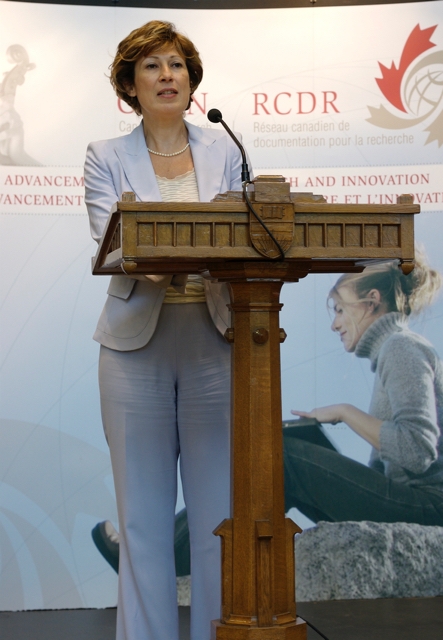Expert panel to provide credible aquaculture science
Panel will help government remain a strong, science-based regulator of the aquaculture industry
(Pictured) Canada’s chief science advisor, Dr. Mona Nemer
By Seawest News
Canada’s chief science advisor, Dr. Mona Nemer, will lead an independent expert panel to provide recommendations to government on the aquaculture industry.
“Our government understands that Canadians have real concerns around aquaculture. We look forward to the recommendations of the panel led by the Chief Science Advisor on how science can be better applied to decision making and communicated to the public in support of sustainable aquaculture as we seek to remain a strong, science-based regulator of the aquaculture industry,” said Dominic LeBlanc, Minister of Fisheries, Oceans and the Canadian Coast Guard.
Revenues from seafood farming in Canada reached $1.35 billion in 2016, and included an economic impact of $5.1 billion, jobs totaling 25,040, and Indigenous participation across the nation.
Over 40 First Nation and Indigenous communities are now directly or indirectly involved in farming seafood in Canada.
In British Columbia, farm-raised salmon is the province’s highest valued seafood product, the province’s top agricultural export, and generates over $1.5-billion towards the B.C. economy, resulting in over 6,600 jobs.
In 2016, B.C. exported $1.3 billion in seafood products to 80 markets, an increase of 17 per cent in value from 2015.
“Aquaculture in Canada today is leading the way with science and the very highest environmental, food safety and social standards. Working in partnership with Fisheries and Oceans Canada, coastal communities and Canada’s Indigenous peoples, we have built a responsible and sustainable farmed seafood sector that we can all be very proud of,” said Timothy Kennedy, Executive Director of the Canadian Aquaculture Industry Alliance.
“Any efforts to increase engagement with Canadians and to develop trust and understanding of the science are welcomed.”
“Farmed seafood in Canada is sustainable, diverse and growing. We are playing a leadership role on environmental stewardship and creating high value middle class jobs. We are excited by the future opportunities,” said Kennedy.
Minister Leblanc said robust and credible science helps the Government make evidence-based decisions that support the protection of our environment, ensuring that sustainable industries continue to provide good, middle-class jobs for Canadians.
The Department of Fisheries and Oceans in a statement said that it prides itself in science excellence and employs world-class scientists who are committed to delivering the highest quality advice to support departmental decision-making.
The panel, led by Dr Nemer, will also provide advice on the communication of this science, and associated decisions, to Canadians. Dr. Nemer will deliver a report of the expert panel to the Ministers. The report will be made publicly available.
This corresponds with the Chief Science Advisor’s mandate to ensure that government science is fully available to the public, scientists are able to speak freely about their work, and scientific analyses are considered when the Government makes decisions.
By the numbers
$1 billion – 2016 farmed seafood production was 200,565 tonnes – up from 190,111 in 2015.
Canada’s aquaculture exports in 2016 were valued at a record $1 billion.
25,000 – In 2016, Canadian farmed seafood production and processing generated a total of over $5.1 billion in economic activity, $2 billion in GDP, and $1.16 billion in wages for 25,000 Canadian workers. And much of these economic benefits occur at the local, community level in Canada.
40 – Over 40 First Nation and Indigenous communities are now directly or indirectly involved in farming seafood in Canada. Indigenous participation in farmed seafood is found in nine of the ten Canadian provinces.
1% Only 1% of Canada’s marine and freshwater area that is suitable for seafood farming is being used. And Canada has by far the lowest level of production per kilometre of coastline amongst our major competitors.
27 – Finfish represents the largest component of the aquaculture sector, with 27 different species such as salmon, trout, and Arctic char commercially grown in all regions in Canada – in both marine and freshwater environments. Shellfish is also an important part of the aquaculture sector on both coasts with 20 different species of shellfish cultured, such as mussels, oysters, clams and scallops.

